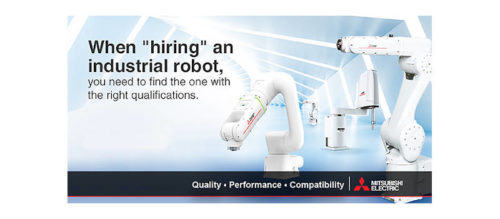How cobots have changed and improved the robotics industry
The introduction of collaborative robots (cobots) has revolutionized the robot industry and improved access to industrial robotic systems.
Collaborative robot insights
- Collaborative robots (cobots) are designed to work alongside humans and are designed to be flexible and adaptable while operating on the manufacturing floor.
- They can reduce overall investment costs and their features allow them to perform tasks that free up human workers to handle more complex tasks a robot can’t easily do.
Collaborative robots (cobots) represent a major opportunity in industrial automation by creating more up innovative shop floors where robots operate alongside humans in a shared workspace, without the presence of safety barriers. As a result, they are supporting advances within industrial environments, augmenting the capabilities of operators as well as helping them focus on other tasks.
Cobots have been designed to interact with humans and to be simple to use. These two features deliver multiple benefits – cobots are economical robotic systems that are flexible and adaptable, so they can be quick to set up and redeploy.
Reduced overall investment costs
Reducing investment cost, as well as offering ease of setup, programmability and simplified integration with third-party devices, cobots have been able to address a number of the shortcomings faced by conventional industrial robots. In effect, they offer an alternative to traditional robotic systems, expanding the possible applications on the shop floor beyond collaborative uses.
For example, they have been helping entry-level users improve their robotics skills. Similarly, they could offer a solution to companies interested in automating key processes but who in the past may have been limited by the available funding, manufacturing footprint or lack of in-house robot programming knowledge.
Innovative features
The innovative features of collaborative solutions have actually also helped reshape the development of their counterparts, industrial robots, to overcome their traditional limitations. Today it is possible to find high-performance industrial robots on the market that are as safe, simple to use, economical and easy to interact with as cobots.
The presence or absence of protective barriers is no longer a distinctive feature separating industrial robots from cobots as many collaborative setups still require the use of safety scanners or touch-sensitive technology, just like industrial robots. The key remaining differentiator between industrial robots and cobots is their overall performance, with industrial solutions still able to offer greater repeatability in positioning and speed.
So, with a growing number of different robots available today, it is important for end users to clearly identify their requirements in order to get the solution that is best suited to address their specific needs and maximize the potential gains. For example, if companies are interested in infrequent interactions between humans and machines while increasing the speed of a process, industrial robots are to be favored. Conversely, if close and regular interaction between humans and machines is key, collaborative solutions represent the best option.
– This originally appeared onControl Engineering Europe’swebsite. Edited by Chris Vavra, web content manager,Control Engineering, CFE Media and Technology,cvavra@cfemedia.com.
你有经验和专业知识的遮阳帽吗cs mentioned in this content? You should consider contributing to our CFE Media editorial team and getting the recognition you and your company deserve. Clickhereto start this process.





